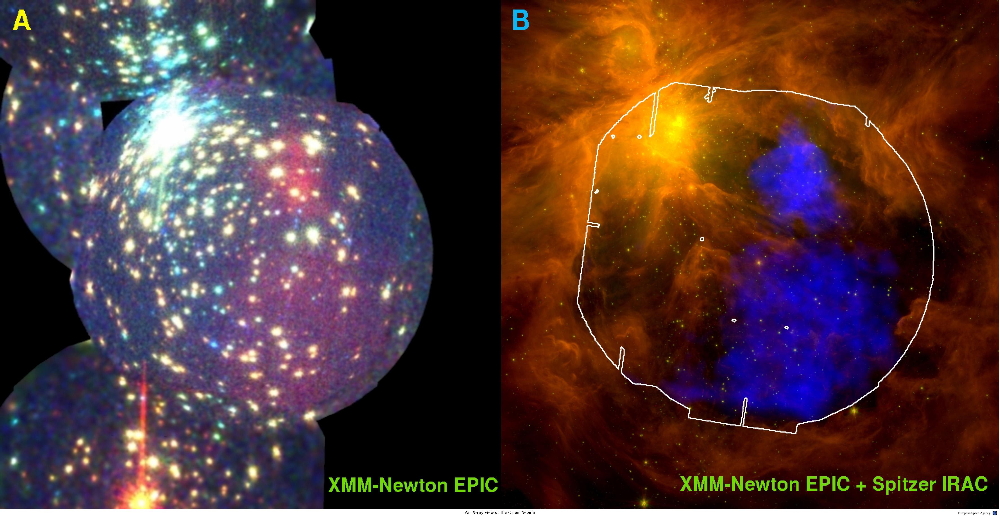
 Credit: M. Güdel and ESA
Credit: M. Güdel and ESA
Young Stars Blowing Bubbles
The Great Orion Nebula is the nearest region where massive stars are forming. It's a dangerous place since these stars will explode as supernovae which (perhaps) might seriously affect life on earth. Astronomers are wisely keeping a sharp eye on it. The image above shows two recent observations of the Orion nebula. The one on the left is an X-ray image taken by the XMM-Newton Observatory. The one on the right is an infrared observation by the Spitzer Space Telescope. The Spitzer image is dominated by huge wispy clouds of warm dust. The X-ray image is dominated by emission from hot young stars (the images of which become more distorted the further away they are from the center of the field of view). But XMM revealed a surprise too: huge clouds of hot gas surrounding the stars, shown in blue in the Spitzer image. The bubbles of hot gas are produced by the impact of the winds blowing off the surface of the hot stars with the cool material in the nebula. The hot gas is most easily seen poking through cavities where absorption by dust is low.
<
HEA Dictionary ● Archive
● Search HEAPOW
● Other Languages
● HEAPOW on Facebook
● Download all Images
● Education ● HEAD
>
Each week the HEASARC
brings you new, exciting and beautiful images from X-ray and Gamma ray
astronomy. Check back each week and be sure to check out the HEAPOW archive!
Last modified Tuesday, 27-Feb-2024 10:10:14 EST


